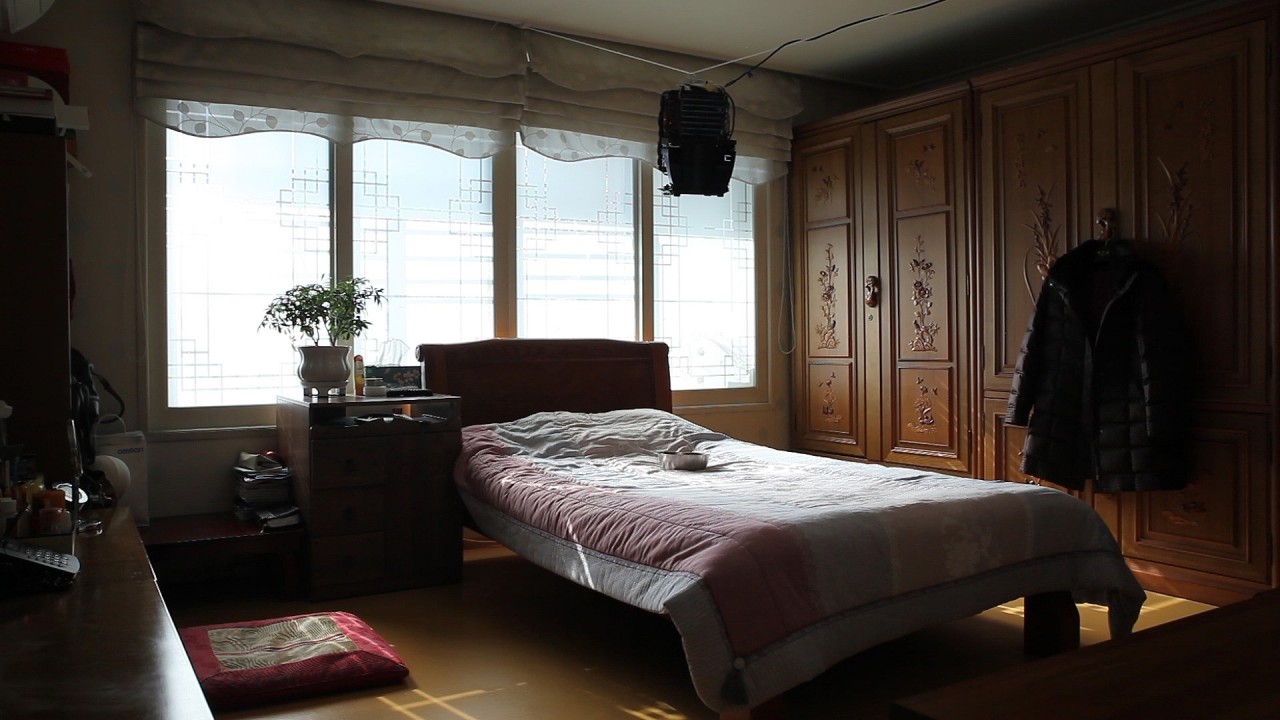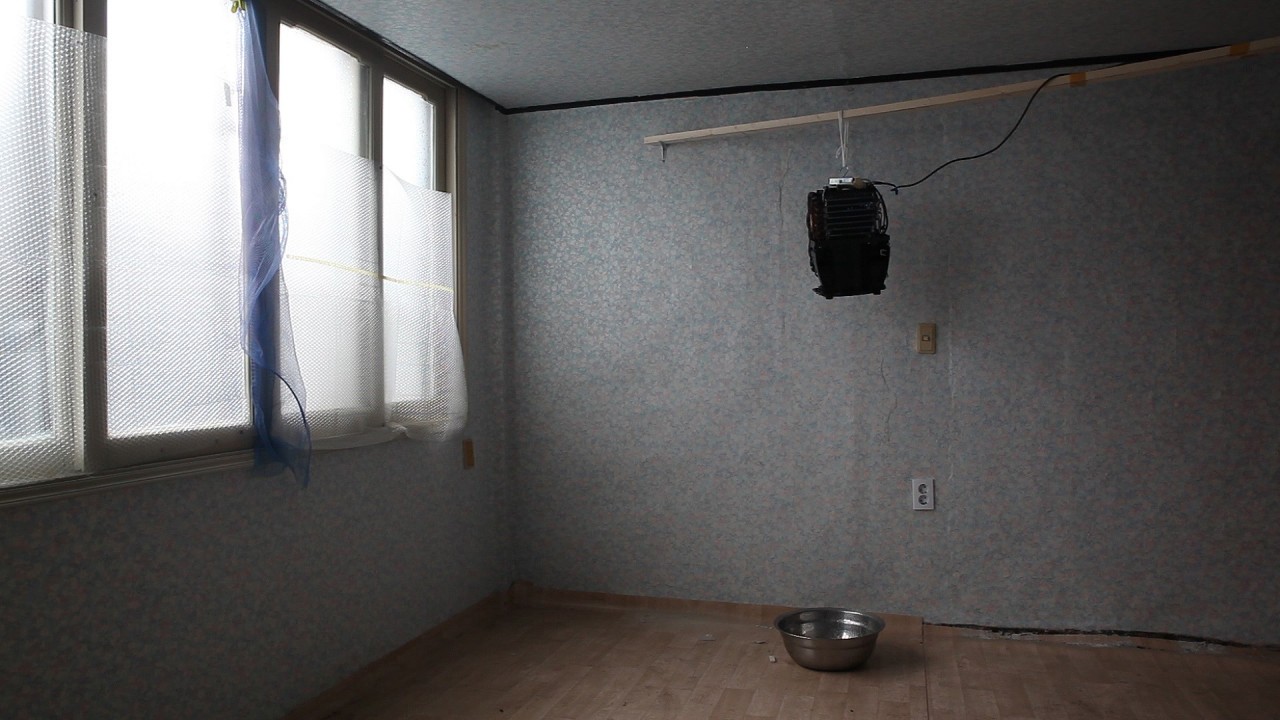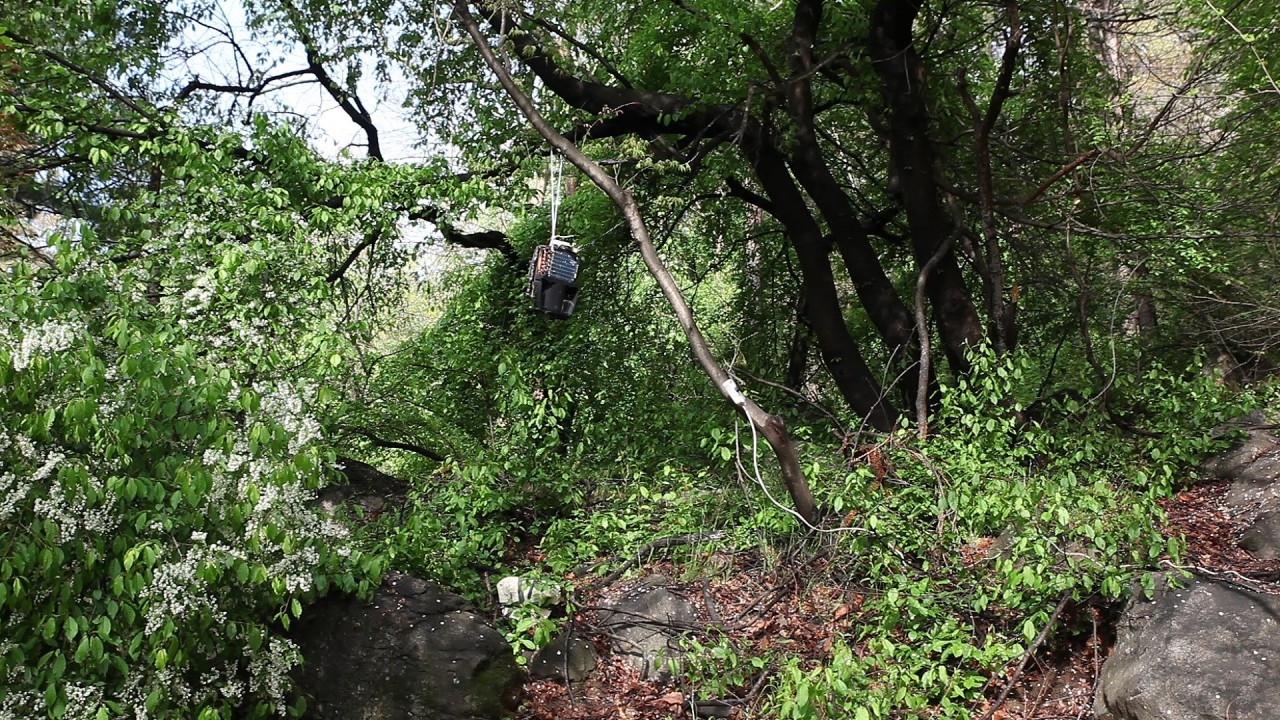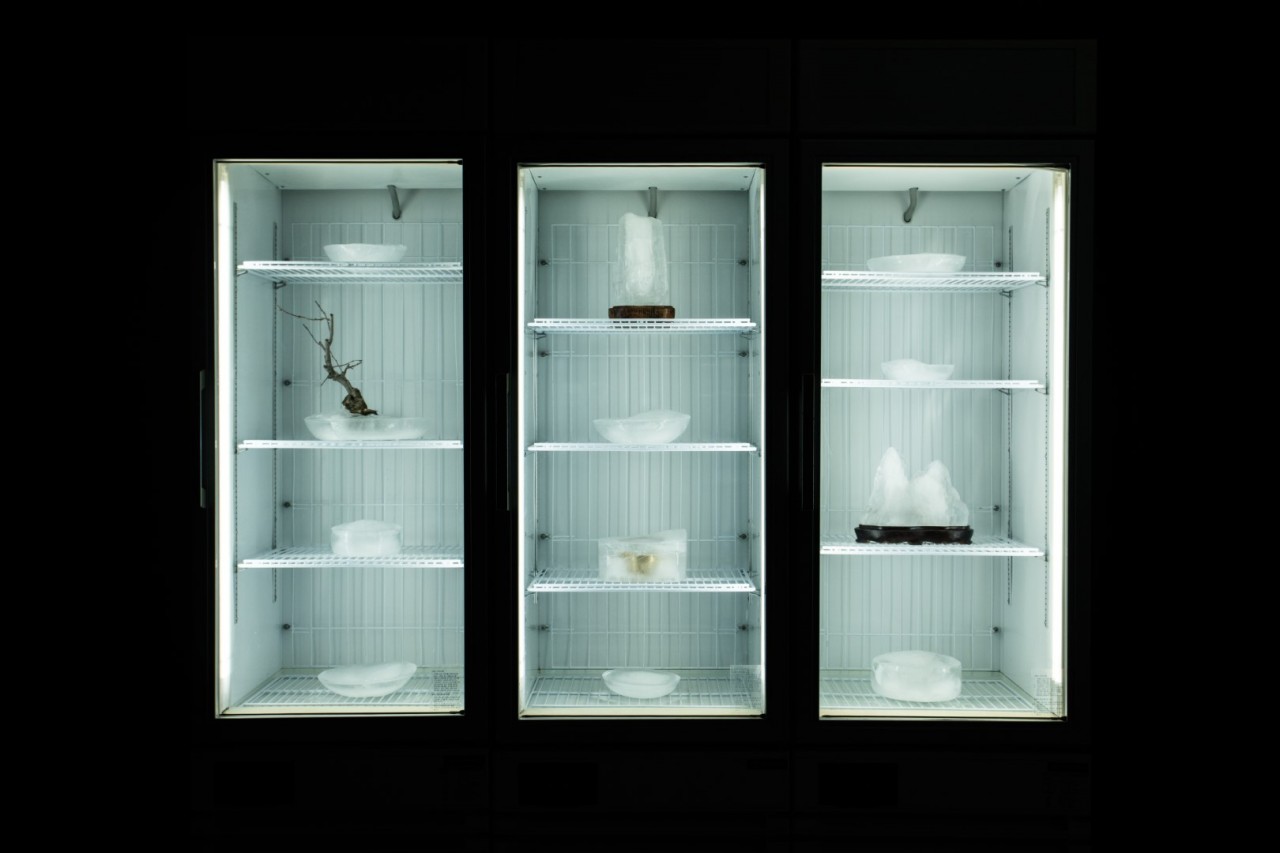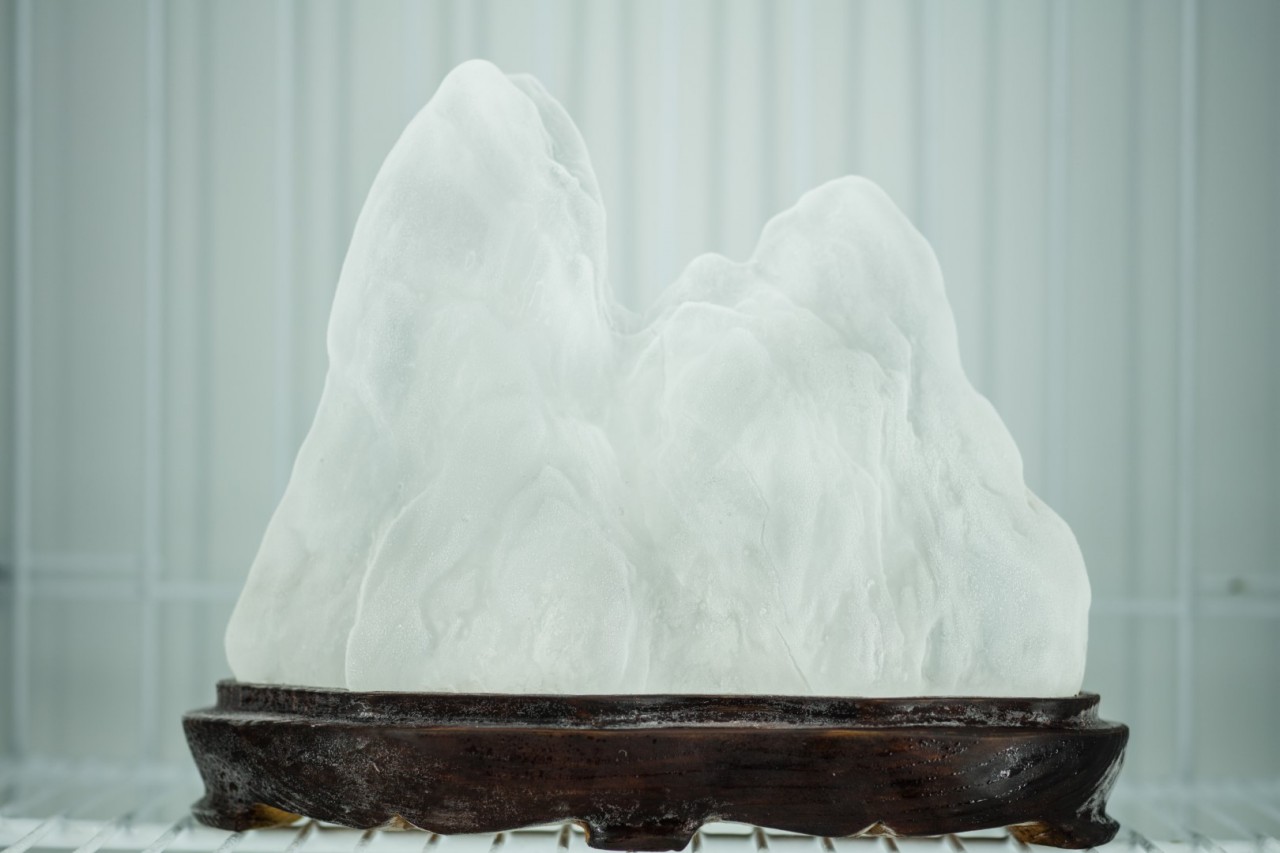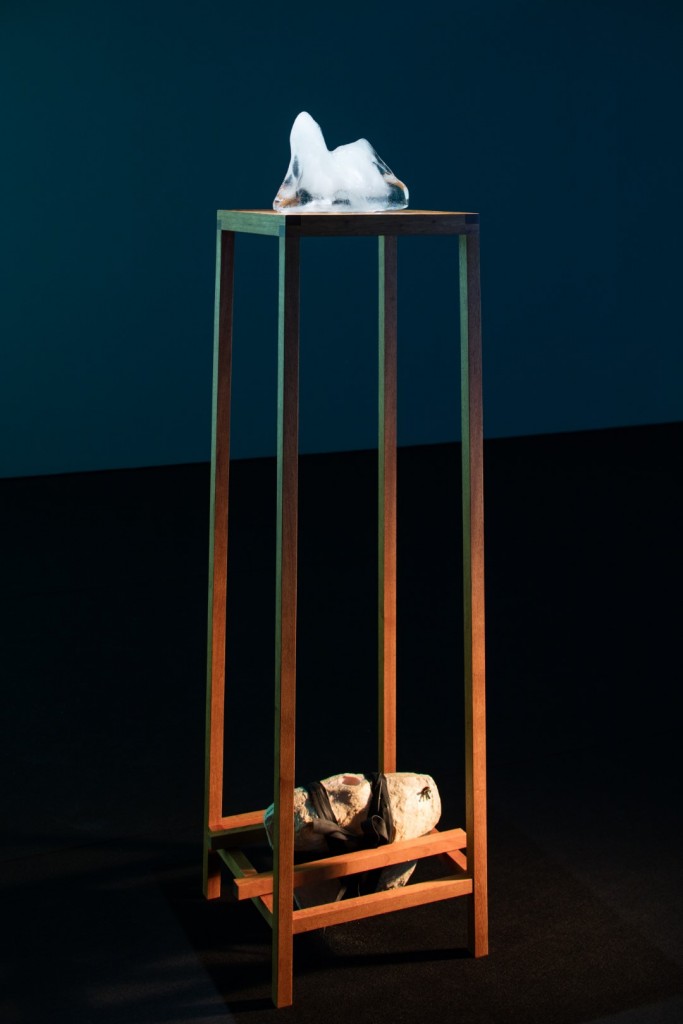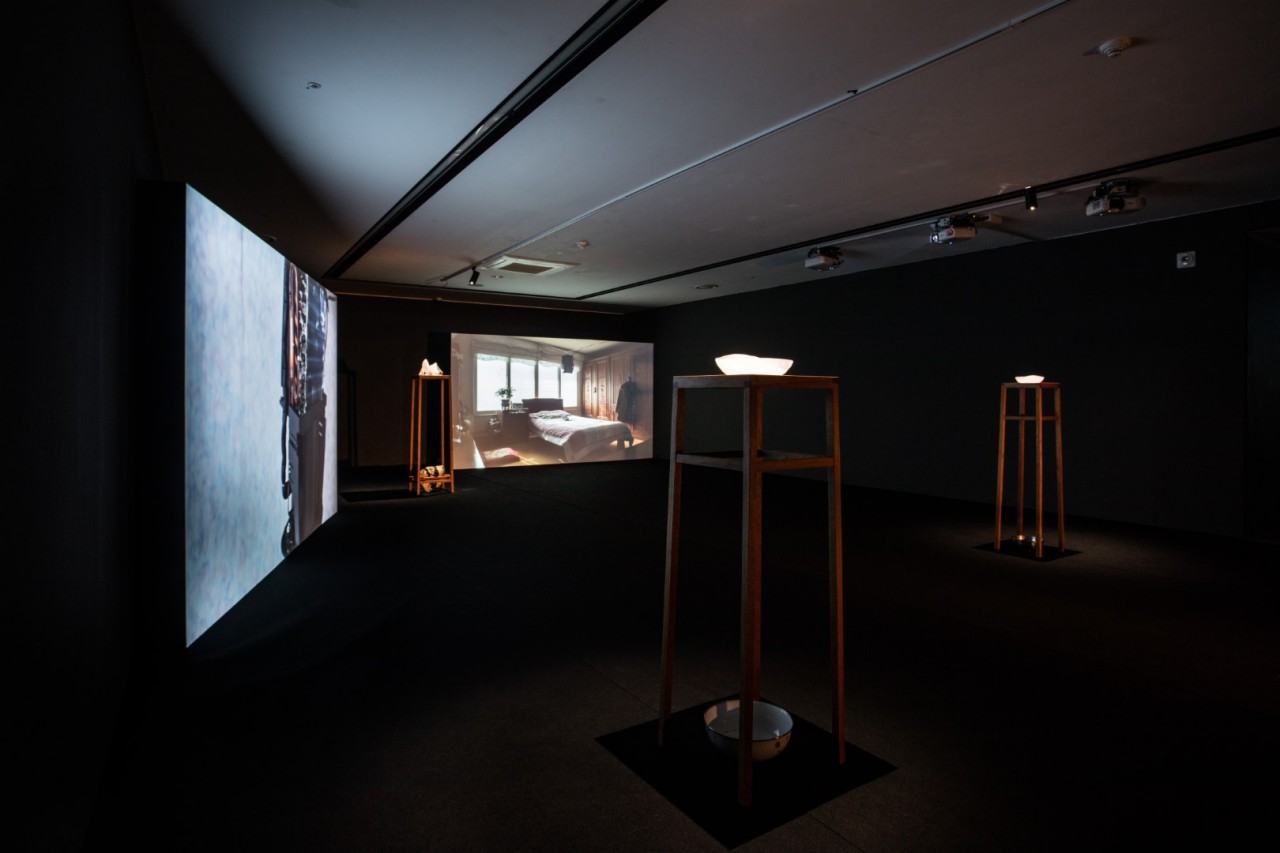Exhibitions
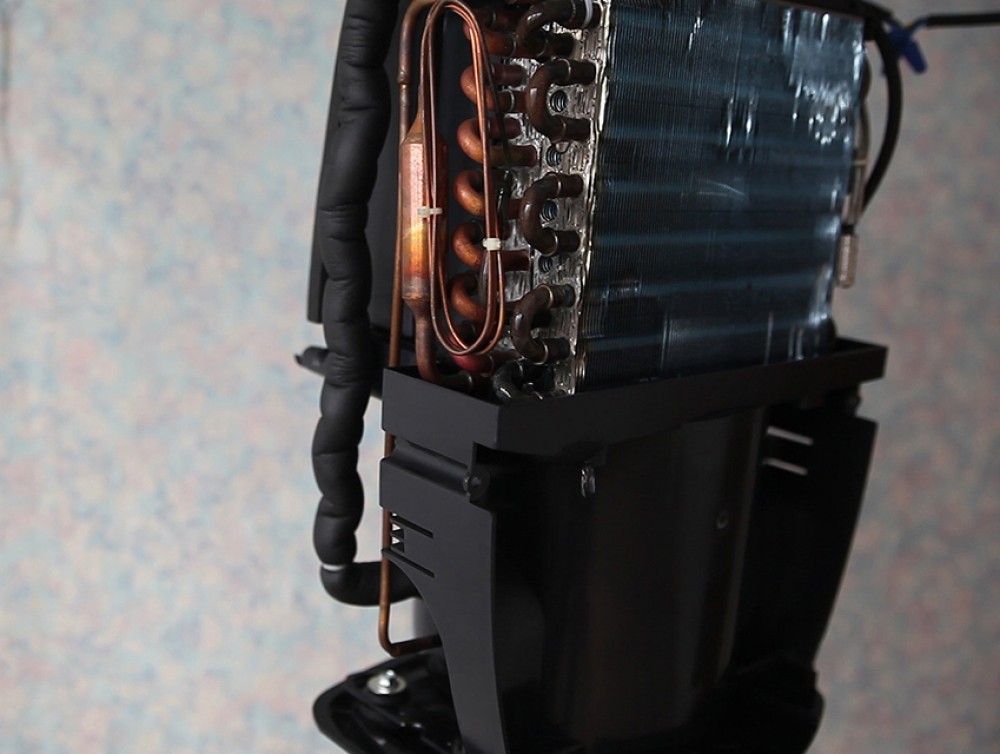
PERIGEE ARTIST #22 이창훈
꼬리
2020.06.05. FRI ~
2020.08.08. SAT
<지금 여기에서 드러난 ‘꼬리’>
신승오(페리지갤러리 디렉터)
이창훈은 지속적으로 우리의 삶의 유동적이며 비물질적인 경계를 확인하고, 시공간에 부여되어온 가치와 본질을 인식하기 위한 노력을 해오고 있다. 특히 많은 사람들이 살고 있는 도시의 거주 공간의 이동과 변화에서 목격되는 것들에 주목한다. 그리고 작가로서 현재 내 눈 앞에 펼쳐지는 공간이 가지고 있는 다양한 의미의 층위를 어떻게 읽어낼 수 있을까라는 자신에게 던지는 반성적인 질문을 바탕으로 작업을 하고 있다. 이번에 선보이는 전시의 제목은 《꼬리》이다. 그는 이 제목을 꼬리에 꼬리를 물고 이어지는 순환이라는 반복의 고리를 잘라내었을 때 비로소 보이지 않았던 시작과 끝이 드러난다는 의미로 사용하였다. 아무런 문제 없이 반복되는 동일한 리듬의 시공간에서 우리는 그 변화의 흐름을 온전히 파악할 수 없다. 그러나 작가의 개입과 같은 사건으로 인해 단단한 시간의 흐름에 균열을 일으키게 되면, 비로소 그 배열이 가시화된다. 따라서 이번 전시 제목은 그가 바라보는 공간에서 중요하게 생각하는 것이 다름 아닌 순차적 시간의 흐름에 대한 개입이라는 것을 알려준다. 이는 이번 전시에서 갑자기 등장한 것은 아니다. 그는 달력처럼 시간을 알려주는 도구를 재조합하여 시간의 흐름을 뒤섞어 오류의 상태로 만드는 <달력_헤테로크로니아>, <2014년에 태운 2015년>, <원을 베어버린 사선> 등의 작업....
<The Tail Disclosed Here Now>
Seung Oh Shin(Director of Perigee Gallery)
Changhoon Lee has made constant efforts to determine the fluid, immaterial border of our lives and touch on the nature and value given to the time and space we inhabit. He has taken special note of what can be seen from the shift and change of residential spaces in the city where many people live. His work is anchored in his own reflective inquiry vis-à-vis how to interpret the layers of the broad spectrum of meaning that exists in the space before his eyes at a given point in time. The title of this exhibition is The Tail. Lee has adopted this title in regards to how an invisible beginning and end become visible when a never-ending cycle is cut or severed. We cannot grasp the entirety of the tide of change in space-time in which the same rhythms are repeated without problems. However, if an event like an artist’s involvement can cause a rupture in the solid passage of time, its sequence can be visualized. This exhibit title demonstrates what Lee thinks is important in a space where he examines his involvement in the sequential passag....
신승오(페리지갤러리 디렉터)
이창훈은 지속적으로 우리의 삶의 유동적이며 비물질적인 경계를 확인하고, 시공간에 부여되어온 가치와 본질을 인식하기 위한 노력을 해오고 있다. 특히 많은 사람들이 살고 있는 도시의 거주 공간의 이동과 변화에서 목격되는 것들에 주목한다. 그리고 작가로서 현재 내 눈 앞에 펼쳐지는 공간이 가지고 있는 다양한 의미의 층위를 어떻게 읽어낼 수 있을까라는 자신에게 던지는 반성적인 질문을 바탕으로 작업을 하고 있다. 이번에 선보이는 전시의 제목은 《꼬리》이다. 그는 이 제목을 꼬리에 꼬리를 물고 이어지는 순환이라는 반복의 고리를 잘라내었을 때 비로소 보이지 않았던 시작과 끝이 드러난다는 의미로 사용하였다. 아무런 문제 없이 반복되는 동일한 리듬의 시공간에서 우리는 그 변화의 흐름을 온전히 파악할 수 없다. 그러나 작가의 개입과 같은 사건으로 인해 단단한 시간의 흐름에 균열을 일으키게 되면, 비로소 그 배열이 가시화된다. 따라서 이번 전시 제목은 그가 바라보는 공간에서 중요하게 생각하는 것이 다름 아닌 순차적 시간의 흐름에 대한 개입이라는 것을 알려준다. 이는 이번 전시에서 갑자기 등장한 것은 아니다. 그는 달력처럼 시간을 알려주는 도구를 재조합하여 시간의 흐름을 뒤섞어 오류의 상태로 만드는 <달력_헤테로크로니아>, <2014년에 태운 2015년>, <원을 베어버린 사선> 등의 작업을 선보여 왔다. 이창훈은 아마도 이러한 도구화된 시간적 구조 안에서 우리의 익숙함과는 다르게 무엇인가의 공간을 인식하는 오류의 근원이 존재하고 있음을 제목을 통해 암시하고 있는 것이다. 이런 시선으로 그의 작업을 바라보면 선형적이며 반복적인 시간을 대표하는 시계와 달력과 같은 시간의 도구는 우리의 삶을 무대 위에서 하나의 프로그램으로 진행되는 연극적인 공간으로 보이게 만든다. 그러나 우리는 아무리 비선형적인 시간을 인식한다 하더라도 여전히 선형적으로 이어지는 시간 속에서 살고 있다. 그리고 지금의 도시 공간은 과거의 산업자본주의 시대에서부터 시작된 진보와 개선을 바탕으로 한 미래를 위해 나아가는 직선적인 가치를 여전히 보존하고 있으며, 그로 인해 발생하는 흔적들을 우리 주변에 산재시키고 있다. 작가는 이렇게 오랜 시간 동안 임의로 설정된 순차적인 시공간 속에서 보존되고 남겨지는 것은 무엇인지 우리의 인식이 가상의 공간까지 확장된 현재에도 지금까지 확립되어온 사회적 규범과 행위, 믿음의 체계가 갖추어진 환경을 아직도 믿을 수 있는 것인지 의문을 가진다. 그리고 자신의 작업을 통해 우리가 마주하는 삶의 공간에서 무엇을 읽어낼 수 있을지에 대해 관객과 공유하고자 한다.
우리가 이미 알고 있듯이 시간의 흐름은 자연스럽게 어떤 형태로든 잔재물을 생산한다. 그리고 이내 그것은 공간을 채워나간다. 작가는 공간 속에서 단순히 눈에 보이는 물질적인 대상에서 머무르는 것이 아니라 가시적인 것과 비가시적인 것, 느낌과 정취 같은 비물질적인 것을 모두 포함하여 경험해 나간다. 그리고 이를 바탕으로 그 현실의 공간에 개입하여 그 안에서 잠재되어 있는 무엇인가를 드러내고자 한다. 그렇다면 이제 전시에서 그가 경험한 공간이 가진 본질을 드러나게 하기 위해 사용하는 장치는 무엇인지 살펴보도록 하자. 그의 작업은 제습기를 개조한 눈에 보이지 않는 습기를 포집하는 장치를 만들고 이를 자신이 관심을 갖고 관찰하던 공간에 설치하면서 시작된다. 작가가 선정한 공간은 그가 오래전부터 관심을 가지고 접근하고 있었던 재개발 예정지로 이미 거주자가 떠난 집, 작가 자신의 어머니가 실제로 거주하고 있는 공간, 그리고 누구나 찾을 수 있는 자연의 공간이다. 이러한 세 공간에서 포집 과정을 통해 얻어진 물은 작가가 제작한 수석 형태의 몰드와 수집 용기인 그릇에서 얼려진다. 이를 바탕으로 전시장에 등장하는 작업은 위에서 언급한 공간을 담아낸 3채널 영상, 포집된 물로 얼린 얼음을 녹여서 그 물을 다시 용기에 받아내는 설치작업, 그리고 냉동고에 진열되어 있는 다양한 형태의 얼음들이다. 그가 서로 다른 세 장소에서 물을 포집하는 것은 자신에게 체험되는 시간을 고스란히 전시장으로 옮겨오기 위한 행위이며, 이렇게 얻어진 물은 그곳에 관련된 사람들의 삶과 깊게 관련되기도 하지만 사람과 상관없는 공간 그 자체의 물리적인 상황 혹은 이 모든 것과 상관없이 축적된 시간들을 의미한다. 이미 사람이 사라진 공간, 여전히 사람이 살고 있는 공간과 같은 상반된 공간은 작가에게 있어서 언젠가 서로의 상황으로 변할 수 있는 가능성이 내재되어 있기에 거울을 마주 보고 있는 상태와 유사하다. 또한 작가의 영상에는 사람들이 등장하지 않고 모두 비어있는 공간으로 나타나는데, 이는 사용자로서의 인간이 가진 관점만으로 공간을 읽어 내는 것이 아니라 공간 그 자체에 내재된 이야기를 찾기 위함이다. 그래서 작가는 최대한 자신의 눈에 보이는 상황을 구체적으로 있는 그대로 써 내려가려는 태도를 취한다. 따라서 그의 영상에 등장하는 공간은 눈길을 끄는 자극적인 대상보다는 흔하고 뻔한 것들이며, 이를 느리고 고정된 프레임을 사용하여 보여준다. 또한 해가 떠 있는 낮이라는 대충의 시간을 가늠할 수 있지만, 정확한 시간의 흐름을 가늠하기 힘들다. 이런 방식으로 작가는 시간과 공간에 대한 느린 음미를 우리에게 제시하고 있다. 이와 동시에 그는 공간에서 느껴지는 따뜻함, 어두움, 습함, 바람 등의 시각 외의 후각적이고, 촉각적인 감각을 우리에게 동시에 전달하고자 한다. 영상과 함께 놓여진 설치 작업에서는 전시 기간 동안 얼린 형상을 녹이고 다시 얼리는 과정을 반복적으로 계획하였다. 이 과정에서 얼음이 녹으면서 다시 자신의 용기로 돌아가는 순환을 보여주는 동시에 물이 떨어지면서 나는 소리를 통해 영상의 흐름에 자연스럽게 개입한다. 이렇게 물과 얼음은 영상 속 공간에서 얻어진 것이지만 자신만의 독자적인 시간성을 확보하게 되는 것이다. 또한 실제적으로는 고체인 얼음이 다시 액체가 되는 과정 중에 눈에 보이지 않게 증발하여 일부가 손실되거나, 녹여진 액체를 다시 고체로 만드는 과정에서 이전의 모양과 동일 하지 않은 변환의 한계를 의도적으로 드러낸다. 이와 같이 다른 성질로 변환하는 상황들은 기본적으로 시간의 순환구조를 가시적으로 드러내는 것처럼 보이지만 사실상 우리는 이를 전시장에서 온전히 읽어낼 수는 없다. 단지 우리는 전시를 보는 그 당시의 현재적 시공간에서 벌어진 순간적 상황의 어느 단편만을 볼 수 있을 뿐이다. 그가 만들어 놓은 얼음처럼 모든 것은 임시적으로 고정되어 있다. 이렇게 냉동고에 진열해 놓은 포집된 물로 만들어진 얼음은 시공간을 인식하는 다각적인 방식의 찰나적 공존을 보여주고 있다. 이는 작가가 제작한 몰드에 의해 새롭게 제작된 수석 같은 형태나 이미 기성품으로 존재하고 있었던 그릇에 고스란히 담겨있는 형태, 혹은 틀에서 벗어나 오히려 그 틀을 뒤덮고 있는 얼음과 같이 안과 밖 그 어디에도 속해 있지 않은 것들도 존재한다. 이런 모든 형상은 작가에 의해 포집되고 변환을 거치면서 얼고 녹기를 반복하다 어느 순간에 사라질 지금 잠시 드러난 ‘꼬리’ 이다.
지금까지 살펴본 것처럼 전시를 이루고 있는 구조는 일견 단순하지만, 그가 관찰하고 경험한 여러 공간과 시간 그리고 그 안에서 보고 느껴지는 것들이 복잡하게 입체적으로 엉켜 있다. 이런 전시 구조는 단순히 작가만의 시선이 아니라 다각도로 공간과 시간을 연결시킨 입체적인 방식의 시각을 우리에게 제시한다. 이렇게 그가 공간을 탐색하는 방식은 서로 다른 모습을 보여주는 특정한 상황을 걷어내고 다시금 연결, 집합, 조합을 통해 새로운 인식의 토대를 마련하기 위한 매개를 만들어 내는 실천과 수행을 하고 있다. 여기에는 변환의 상태로 이동하게 만드는 매개라는 상황이 중요하다. 매개는 언제나 드러나 있는 것이 아니라 숨겨져 있고 순간적으로 나타났다 사라지는 것이다. 또한, 자신의 의지와는 상관없이 그의 이전 작업인 <미완의 프로젝트_두물머리>에서처럼 외부적인 영향(주민들의 민원)에 의해 더 이상 매개의 역할을 하지 못하고 중단되기도 한다. 따라서 그에게는 어떤 결과물을 도출하기보다는 작업을 통해 시공간에 대한 매개를 촉발하는 것이 중요하다. 정리하자면 영상과 설치작업에서 우리에게 보여주는 것은 그가 느끼고, 감각하는 수행적인 태도를 통해 순차적 시간을 가로지르며 현재의 시공간을 드러내는 것이다. 이는 물론 우리 모두가 고유하게 가지고 있는 자신의 경험을 바탕으로 하는 장소에 대한 기억과 가치를 바탕으로 시작되어야 한다. 그러나 그가 우리에게 전달하고자 하는 것은 이미 오랜 시간 동안 신체화되고 장소화된 공간이 가지고 있는 일반화된 서사가 아니다. 그렇다고 모든 것이 고정되지 않고 가변적으로 스치는 비장소를 의미 하는 것도 아니다. 다만 그는 이미 우리에게 익숙해진 순환하는 시간 속에서만 일상적인 공간을 바라보면, 구체적인 시공간보다는 추상적인 거리감을 인식하게 될 뿐이라 생각한다. 따라서 이를 사물과 사람이 교차하는 다양한 시간적, 공간적인 양상의 레이어를 동시적으로 한 자리에 모아 놓음으로써 구체적인 대상으로 시공간을 포착하기 위한 토대를 마련하고 이를 시각화하는 과정을 실험하고 있다. 결국 그의 작업에서 우리는 작가의 시선을 따라 공간을 응시한다. 그가 매개하고자 하는 시공간의 가치는 이번 전시에서처럼 우리와 공간이 서로 응시하면서 다양한 감각들을 동시에 입체적으로 느끼게 하는 것이다. 우리도 알다시피 ‘인간’은 실제의 공간에서 가상의 공간까지 끊임없이 이동한다. 다시 말하면 공간의 시선으로 보면 우리는 잠정적인 거주자이다. 그렇기에 우리가 이미 가지고 있는 모든 가치는 하나를 위해 집중되는 것이 아니라 분산되어 퍼져 나가야 한다. 그리고 이를 위해서 우리는 그 ‘꼬리’를 발견해야 한다. 하지만 작가는 모든 것을 새롭게 전도하여 전복하기 위한 자세를 취하지는 않는다. 다만 어떻게 우리의 삶과 연결된 시공간 속에서 끊임없이 움직이며 변화하는 것들을 어떻게 조합하고 재배열하여 인식할지, 다시 말해 ‘꼬리’를 찾기 위해 적극적으로 공간을 읽는 태도를 제안할 뿐이다.
그가 이번 전시 《꼬리》에서 보여주듯이 삶의 공간은 우리와 밀접하게 연결되어 있고, 연속적이거나 무한한 것 같아 보이지만, 사실 이 공간은 나와는 상관 없이 움직인다. 그리고 우리는 이 공간이 어디에서부터 시작되어서 어떻게 분리되고 다시 재생되는 지에 대해 온전히 인식하지 못한다. 우리에게 중요한 것은 공간을 생산하고 점유하여 장소화 하기보다는 우리가 얼마나 한정된 틀 안에서 존재하고 있는지를 인식하고, 어떻게 끊임없이 순환하면서 움직이는 공간을 읽어낼 것인 지에 대한 반성적 태도인 것이다. 그는 이러한 방식으로 우리 ‘삶’의 실체를 목격할 수 있을 것이라 생각 한다. 따라서 그가 작업을 통해 지금 현재의 공간들을 자신만의 방식으로 기록해 나가는 것은 우리의 시공간의 실체를 목격하기 위한 매개체를 구축하기 위함이다. 그리고 더 나아가 관객들의 삶 속에서도 자신의 작업이 어떤 매개로서의 ‘꼬리’가 되길 바라고 있다.
Seung Oh Shin(Director of Perigee Gallery)
Changhoon Lee has made constant efforts to determine the fluid, immaterial border of our lives and touch on the nature and value given to the time and space we inhabit. He has taken special note of what can be seen from the shift and change of residential spaces in the city where many people live. His work is anchored in his own reflective inquiry vis-à-vis how to interpret the layers of the broad spectrum of meaning that exists in the space before his eyes at a given point in time. The title of this exhibition is The Tail. Lee has adopted this title in regards to how an invisible beginning and end become visible when a never-ending cycle is cut or severed. We cannot grasp the entirety of the tide of change in space-time in which the same rhythms are repeated without problems. However, if an event like an artist’s involvement can cause a rupture in the solid passage of time, its sequence can be visualized. This exhibit title demonstrates what Lee thinks is important in a space where he examines his involvement in the sequential passage of time. This perspective is not something that suddenly appears in this exhibition, however. Lee has displayed works such as Calendar—Heterochronie, 2015 Burnt in 2014, and The Line Cutting a Circle in which the passage of time is created in a state of error by reconstructing instruments like a calendar that tell time and blending flowing time. Lee seems to suggest that, unlike our familiarity, the source of our erroneous perception of space lies in such an instrumentalized temporal fabric. Looking at his work from this perspective, we come to realize how the temporal instruments that represent linear repetitive time, such as a clock or a calendar, cause our lives to resemble a theatrical space in which a program is carried out. No matter how much we perceive nonlinear time, however, we still exist in time that flows linearly. Similarly, present-day urban spaces still preserve the linear value of moving forward toward the future based on progress and improvements that have been made since the industrial and capitalist eras, scattering their traces in our surroundings. Lee brings into question what is preserved and left behind in arbitrarily set, sequential space-time and whether or not our view still believes in the environment with the system of social norms, deeds, and beliefs that has been established thus far. He tries to share with viewers what he has gathered from the space of life through his works.
As we already know, the passage of time naturally brings forth a form of residue which eventually fills spaces. The artist has experienced both the visible and the invisible as well as the material and the immaterial together in a space. Involved in the space of reality, he tries to uncover something innate in space. Let us now examine the instruments he uses to unmask the nature of the spaces he has experienced. His work starts by making a moisture-collecting device that has been repurposed from a dehumidifier and installing it in a space he has observed with great interest. Spaces he has chosen include one that is located in a redevelopment district he is interested in and whose occupant has already left, the place where his mother resides, and a space of nature that anyone is free to explore. Receptacles and molds shaped like viewing stones are used to freeze water acquired in the process of collecting the water in the three spaces. His work on show at the venue consists of a three-channel video featuring the spaces mentioned above, an installation in which ice frozen from collected water melts and is captured again in a receptacle, and a display of diversely shaped lumps of ice in a freezer. Deeply associated with people’s lives in that place, water collected in this way can represent either the physical situation of space itself that has nothing to do with people or time amassed regardless of all of these elements. The antithetical spaces, spaces that people have already disappeared from, and spaces that people still inhabit seem to be in a mirror state as each one has the possibility of turning into the other at any time. No people appear in his video so each space remains empty. This suggests he is trying to explore narratives inherent in a space itself instead of trying to interpret the space from the perspective of a human being as a user of the space. Thus, he resolves to describe a circumstance that is seen from his point of view as concretely as possible. Accordingly, space in his video is not meant for eye-catching speculative objects but for common, blatant things, and he shows them in a slow, fixed frame. It is hard to exactly gauge the passage of time even though we can roughly guess the time of day when the sun is up. The artist suggests a slow appreciation of space and time in this way. At the same time, he aims to convey olfactory and tactile sensations such as warmth, darkness, moistness, and windiness, save for visual sensations. The process of melting ice and freezing water is repetitively carried out in the installation work on display alongside the video. The sound water makes as it drips is naturally involved in the flow of the video images, demonstrating the cycle in which water generated from melting ice returns to its own receptacle. Both water and ice is acquired from the space of the video but they retain their own temporality. He also showcases the limits of transformation in the process in which solid ice reverts back to liquid water and liquid water again turns into solid ice. While this state in which the same matter alters into things with different properties elementally seems to reveal the cyclic structure of time, we cannot interpret it as a whole at the venue. We are able to view just a fragment of a momentary situation that takes place in present space and time. Everything stays temporarily fixed like the ice he has made. The lumps of ice made from collected water and then displayed in a freezer showcase multilateral ways of perceiving space-time and their coexistence. They exist in a form similar to that of a viewing stone due to the use of molds, a form of being contained in a readymade vessel, and a form that belongs nowhere like ice which overspread the frame. All of these forms are “tails” that will die out at some point in time while they repeat this process of freezing and melting, undergoing acts of collection and transformation by the artist.
As reviewed above, even though the fabric of this exhibition appears simple at a glance, the spaces and times he has observed and experienced as well as the things he has felt and viewed are intricately entangled with one another in three dimensions. This structure provides us with a three-dimensional view that relates space to time from multiple perspectives as opposed to only his own. While exploring spaces, he gets rid of specific situations of different aspects, and carries out a practice or performance through which he can forge the foundation for a new perception through connection, collection, and combination. The important thing here is a meditational situation by which one can move to a state of transformation. Mediation is not revealed but is concealed, as a thing that appears and disappears in a moment. As in his previous work Unfinished Project-Dumulmeori, his practice of mediation stops playing an intermediary role due to external influences (civil complaints raised by the residents) against his will. What matters in his work is to bring forward some mediation in space-time rather than drawing out a specific outcome. In summary, his video and installation are a showcase of present-day space-time, cutting across sequential time through his performative demeanor. These of course have to derive from our memory and value of places based on our own experiences. All the same, what he tries to convey to us is not a generalized narrative retained by a physical space for a long time. That’s not to say that it means a non-place where nothing is fixed and is variably fleeting. He just holds that we perceive a sense of distance, not any specific space-time, when we encounter mundane spaces from the cycle of time that is already familiar to us. Therefore, he lays the foundations for capturing space-time as a concrete object by bringing together the layers of diverse spatial, temporal aspects in which things cross with humans. And, he experiments with the process of visualizing this. After all, we gaze at space in his work, following his eyes. The value of the space-time he intends to mediate lies in the fact that we and some space gaze at each other and this enables us to feel a wide variety of sensations at the same time in three dimensions. As we have already learned, “humans” are constantly on the move from actual space to virtual space. That is to say, we are seen as potential residents from the perspective of space. So every value we have is dispersed and diffused, instead of being concentrated on just one focus. And we have to discover that “tails” for this. Lee does not assume a posture to topple or overthrow everything. He just aggressively suggests an attitude to perceive constantly moving and changing things in the spaces associated with our lives by merging and rearranging them, that is, to read space for the purpose of exploring those “tails”.
As he shows in The Tail, the space of our lives is inextricably bound up with us and seems to be continuous and infinite, but it constantly moves irrespective of us. Also, we cannot perceive where this space begins, how it is divided, or how it is regenerated. Rather than creating and occupying a space and turning it into a specific kind of place, it is important for us to perceive how we exist in a limited space and how we interpret space that moves in an endless cycle. Lee holds that we can witness the nature of our lives through such a reflective attitude. His works are thought to chronicle our present-day spaces in his own distinctive manner in order to forge a medium by which we can better understand the nature of our space and time. In addition, he wishes his works can act as the medium of a “tail” in viewers’ lives.



